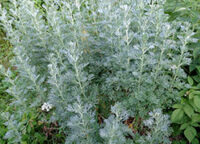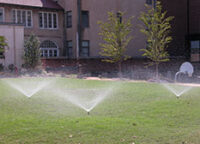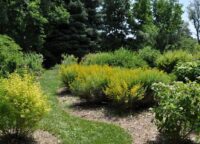- 07, 20, 2015
- No Comments.
- By
Xeriscaping: Ground Cover Plants – 7.230
Print this fact sheet by J.E. Klett and C.R. Wilson* (6/20) Revised by L. Langelo** Quick Facts… Plants that are low-growing (generally less than 24 inches) and spread easily are suitable ground cover plants. Suitable places for xeric ground covers include dry slopes, landscape medians, parking strips, traffic islands and street rights-of-way. Consider ground covers […]
Take a Tour- 07, 20, 2015
- No Comments.
- By
Watering a Home Landscape During Drought – 7.240
Print this fact sheet by J.Klett and D. Buelow* (4/13) Quick Facts… Follow all water rules and regulations of your local water provider. Use only the water that is needed. Water between 6 p.m. and 10 a.m. Design landscapes with water-wise plants. Utilize mulch to reduce soil surface water evaporation. New planted trees require priority […]
Take a Tour- 07, 20, 2015
- No Comments.
- By admin
Sustainable Landscaping – 7.243
Print this fact sheet by J.E. Klett and A. Cummins* (10/11) Quick Facts… When designing a sustainable landscape, long-term success is accomplished through a series of short-term goals. A functional and attractive design will be unique to a specific site and should be based on a careful review process. Identify what inputs are currently excessive. […]
Take a Tour- 07, 20, 2015
- No Comments.
- By
Watering Established Lawns – 7.199
Print this fact sheet by M. Gross and C.E. Swift* (11/14) Revised by K. Jones** Quick Facts… In Colorado, Kentucky bluegrass, tall fescue, and perennial ryegrass lawns must receive supplemental irrigation to survive. Soil preparation is critical to the rooting depth and drought tolerance of turf. Kentucky bluegrass lawns may require 2.5 inches of water […]
Take a Tour- 07, 20, 2015
- No Comments.
- By
Lawn Care – 7.202
Print this fact sheet by T. Koski and V. Skinner * Quick Facts… Proper watering can promote a deeply rooted, healthier turf. Let grass species and health, soil conditions, and weather conditions dictate irrigation practices, not the number of days between waterings. Mow bluegrass, ryegrass, fescue and wheatgrass to a height of 2 to 3 […]
Take a Tour- 07, 17, 2015
- No Comments.
- By
Composting Yard Waste – 7.212
Print this fact sheet by C.R. Wilson and J.R. Feucht* (8/20) Revised by E. Hammond** Quick Facts… Composting yard waste recycles nutrients back into the yard and saves landfill space. Composting reduces yard waste volume by 50 to 75 percent. Compost made with manure is questionable for use in food gardens due to newer strains […]
Take a Tour- 07, 15, 2015
- No Comments.
- By admin
Evergreen Shrubs – 7.414
Print this fact sheet by J. E. Klett and R.A. Cox* (12/17) Quick Facts… All evergreens lose some of their leaves each year. Broadleaved evergreens grow best in areas protected from winter sun, cold and drying winds. When selecting evergreens, consider soil and site conditions. Consider mature size when planting evergreens as overcrowding evergreens will […]
Take a Tour- 07, 15, 2015
- No Comments.
- By
Deciduous Shrubs – 7.415
Print this fact sheet By R.A. Cox and J.E. Klett*(12/13); Revised by S. K. Prentice (4/23)** Quick Facts… Shrubs are immediately noticeable in the landscape because they are at eye level. Flower and fruit displays, interesting foliage shapes and colors, and even bark color and texture add interest. Shrubs can visually anchor a building to […]
Take a Tour- 07, 14, 2015
- No Comments.
- By
Strawberries for the Home Garden – 7.000
Print this fact sheet by H. Hughes, J.E. Ells, G. Schweitermann and J. Reich* (1/21)Revised by Y. Henson and S. Carter** Quick Facts… Strawberries are classified as June bearing, everbearing or day neutral. They should receive full sun at least eight hours every day. They adapt to nearly all areas of Colorado, even high elevations. […]
Take a Tour- 07, 14, 2015
- No Comments.
- By
Backyard Orchard: Stone Fruits – 2.804
Print this fact sheet by R. Hammon and D. Davidson* (5/16) Quick Facts… Peaches, plums, cherries and apricots are all stone fruits that can be grown in the lower altitudes of Colorado. Insects and diseases that affect stone fruits vary with location, year and fruit type. Cytospora canker is a fungal disease that damages bark […]
Take a Tour








